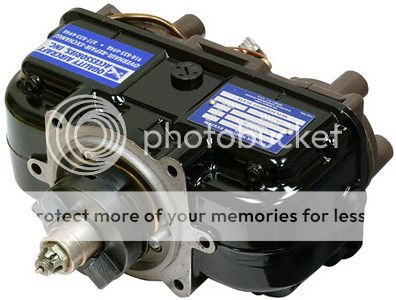mtuomi
En-Route
No. Lost it. Literally.

Sure does wake you up I can tell you that.

Sure does wake you up I can tell you that.

Curious if the correct clamp was installed as there are several out there that kinda fit.
Do tell us the tightness of the other mag when you get a chance.
I've always wondered why we safety wire the oil filter on, but not the mags.
I've always wondered why we safety wire the oil filter on, but not the mags.
I guess it needs an accident before they would consider an AD. There are a few different kinds of clamps for the mags which I learned today. I think they might've used a wrong kind. Im just glad it didnt happen an hr later to the flight, not much to land on in rural Alabama...

The only option is to weld it on.

Because the mag hardware is the clamp, 1 flat washer, 1 lock washer and a nut, for each post.
Half the the aircraft I inspect, some one left the lock washer off, or the lock washer is too well worn to be a lock washer.
I change them to a self locking type nut, and leave the lock washer off. never a problem after that.

Tom, it is a solution - until it is years later and the mechanic has had the mag off 6 times and still using the same self locking nut.
There's no cure for stupid
Curiosity question: as an A&P, how much latitude do you have to change out fasteners like that? (I'm not an A&P and I'd just like to know. This sounds like a really good idea.)
John
Another issue is the correct gasket and proper torque. Over tightening the nuts can crack the mounting flanges.
It's pretty simple, use the correct hardware, use the correct gasket and use a torque wrench set to the proper torque. Keep a bag of lockwashers on hand.
And how many mechanics do you see doing that?
PS, sometimes I wonder if mechanics tend to dink with the timing too much, which would accelerate the wear on the nuts, washers, clamps and even the magneto mounting flanges.
There are no documents that support using a self locking nut for this application.
If you comply with the maintenance many owners think is required every 500 hours, the mag will be off 4 times in the TBO of the engine, but in most cases the timing will be tweaked at each 100 hour or the annual which could be 15-20 times prior to overhaul.
In reality mag maintenance varies with every combination of A&P/ vs/ owner you can think of.
In the last couple of months we've had two airplanes whose magnetos had been ignored for 1300 hours or so. The engines didn't run right. All four mags were found to be beyond economical repair due to the filth that had accumulated in them and allowed internal arcing and so on. I'm seeing this sort of thing far too often. And new mags aren't cheap. The 500-hour checks are a bargain as far as I'm concerned.
So if a mag is manufactured/rebuilt properly, installer properly and maintained properly
In the last couple of months we've had two airplanes whose magnetos had been ignored for 1300 hours or so. The engines didn't run right. All four mags were found to be beyond economical repair due to the filth that had accumulated in them and allowed internal arcing and so on. I'm seeing this sort of thing far too often. And new mags aren't cheap. The 500-hour checks are a bargain as far as I'm concerned.
Too bad aircraft mags don't use an old GM points set that you could dial in with an Allen wrench through a window. Then you would never have to loosen those nuts and twist the case to bring the full timing set back to spec, you just set the timing mark and twist the wrench until you get the break.
I wish E-Mag would get their stuff together and certify their units for OEM replacement.

The old cars used a dwell meter for that, and it would be suicide to try that on an airplane. The only method I'm aware of is to fix the rotor at the specified position (which can't be seen from outside the mag) and set the points there. Besides, I've never seen points that were much good beyond 1000 hours.
I wish E-Mag would get their stuff together and certify their units for OEM replacement. No points in there, and with a bit more work they could probably eliminate the distributor as well. Use the waste-spark system that has two coils for a four-banger and three for a six.
Another Reason I like my Comanche so much. Open up the cowl for every pre-flight. Touch the mags, exhaust nuts, inspect security of control cables and a hoses and a myriad of other things, right in front of you. I've caught a loose ignition harness at the mag, oil cooler hose laying against an exhaust pipe and other less trivial items.
